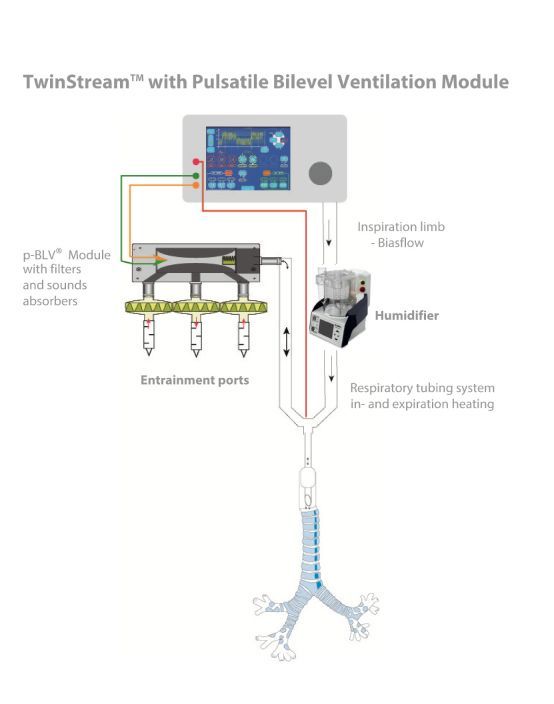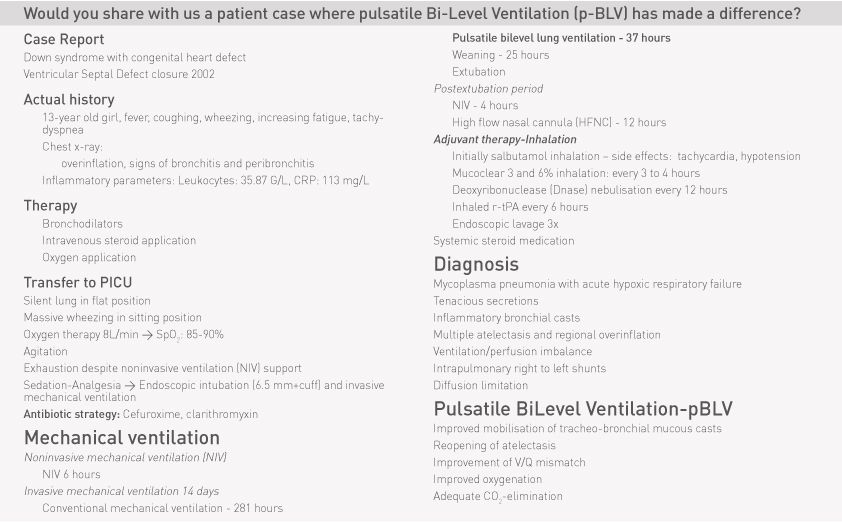ICU Management & Practice, Volume 16 - Issue 1, 2016
The Twinstream® ventilator (Carl Reiner GMBH, Vienna, Austria) is an electricdriven microprocessor-controlled jet ventilator, which allows simultaneous application of two different jet streams (low frequency and high frequency), resulting in a pulsatile Bi-Level Ventilation (p-BLV) mode. ICU Management & Practice spoke to Prof. Dr. Gerfried Zobel about his experiences with the system in the Paediatric ICU at the Children’s Hospital in Graz, Austria.
Which patient groups could potentially benefit from pulsatile Bi-Level Ventilation (p-BLV)?
In the Paediatric ICU infants and children with ARDS, SARS, SARS-like disease with occluded airways, plastic bronchitis, pulmonary barovolutrauma, thoracic trauma, and burn inhalation injury.
How would you summarise your experience with this technology?
Pulsatile-BLV using the Twinstream ventilator significantly increased the clearance of airway debris and secretions associated with improved gas exchange in infants and children with different forms of acute hypoxic acute respiratory insufficiency.
Hypoxaemia is a common finding in the paediatric intensive care unit and may result from paediatric acute lung injury/paediatric acute respiratory distress syndrome (P-ALI, P-ARDS), infection, sepsis and postoperative complications. In addition, these infants and children may have problems with airway secretions. These patients frequently do not respond to standard ventilator techniques and additional therapies such as inhaled nitric oxide, inhalation, prone positioning and recruitment manoeuvres. Hence our decision to use a jet ventilation system.
How does this technology differ from conventional mechanical ventilation approaches and what are its advantages?
A variable bias flow warmed and humidified in the inspiratory limb of the breathing circuit reaches the y-piece connected to the endotracheal tube. The expiratory limb of the breathing circuit is connected with the p-BLV module® and the inspiratory bias flow is modified by two jet streams, resulting in an oscillating gas column to the patients' airways. In addition the p-BLV module® acts as a pneumatic-driven PEEP generator (See image).

Would you recommend using this technology as an alternative / supportive therapy to ECMO?
Use of Pulsatile BLV might avoid the need for ECMO support and it might improve mobilization of airway secretions on ECMO, eventually resulting in shorter periods on ECMO.





















